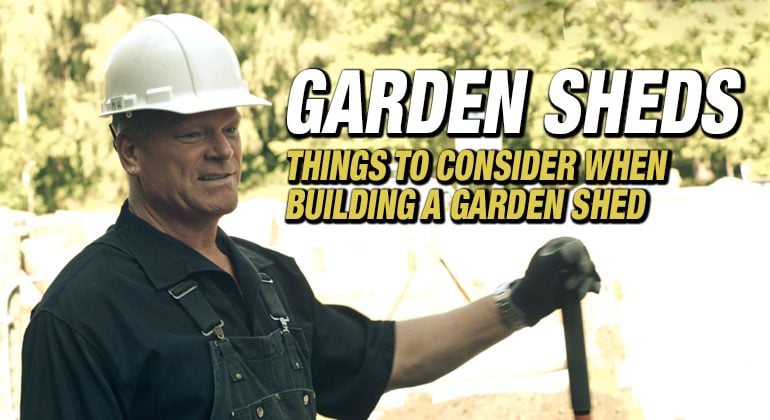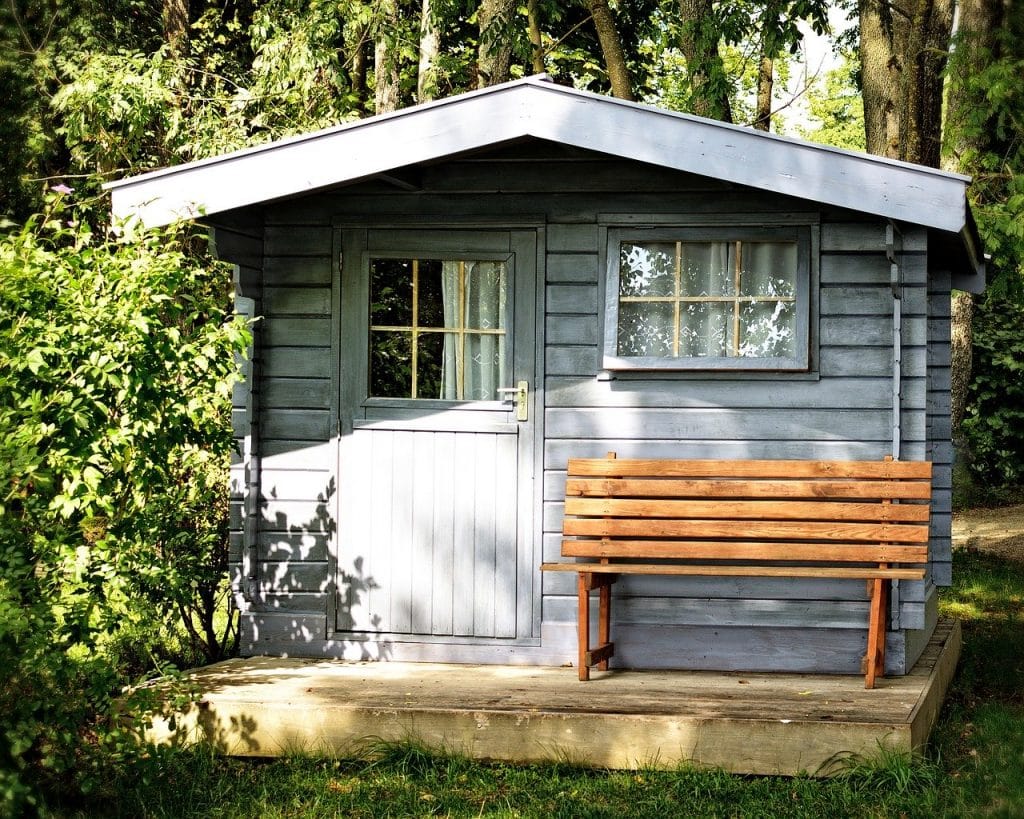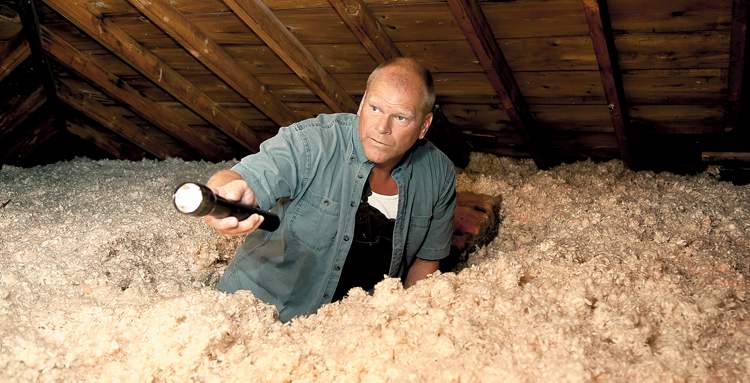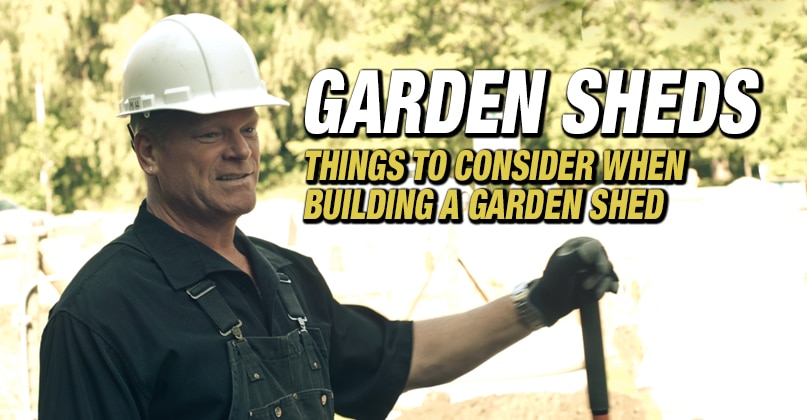Dream of a career where your skills bring joy, enable freedom, and create unforgettable memories? The thriving recreational vehicle (RV) industry offers just that! It’s more than fixing vehicles; it’s...

Things to Consider When Building A Garden Tool Shed
By Mike Holmes
Mike’s Advice / Outdoor Renovations
Saturday, March 5th, 2022 @ 4:07pm
Building a Garden Tool Shed
Building a garden shed can be a DIY project, but it all depends on what you want and how big you want it. There are rules to building a shed, and sometimes you will need a permit—it depends on its size, and every municipality is different.
I think a garden shed is great for storage and a great home improvement project. But you need to do your research. I’ve seen homeowners build beautiful custom sheds from scratch, leveling out a section of the easement to build a proper concrete pad to place the shed on. Then City officials come by—either for maintenance, to check the sewers and drainage, or because a neighbour gave them a call—and the homeowners are forced to take it down.
Do your research first and know what you can and can’t do before a shovel hits the ground. You’ll be saving yourself time and money, and some serious hard labour.
A Garden Shed Adds Extra Storage
Sheds are an excellent option for putting away your patio furniture, umbrellas, mowers, tools, and toys. It offers a good alternative if your garage is getting too full, or you need to create more space.
A shed can add practical outdoor storage space and increase the value of your property — if it’s built right. On the other hand, inadequate preparation and sloppy construction can make you wish you’d stuck with your garage. Think about it: if you don’t properly waterproof your shed – you may open it up one day to find your tools and toys ruined.
If you want to run electrical for either lighting or electric heating, you will need a permit, and your best bet is to hire a pro, such as a licensed electrical contractor.
RELATED
Do you need a permit for your shed?
Before starting the build, your first job is to find out whether you need a building permit–even small sheds may require a permit. At the same time when you are at city hall check on other details, like lot coverage requirements.
You may find you are not allowed to have another building on your property—because too much of your lot is already covered. You also don’t want to find out after the shed is in a place where it’s half a meter too close to the neighbor’s fence.
Before drawing up plans for that deep roof overhang, be aware that there will probably be restrictions on overhang depth and how close that can be to the property line. Remember—it’s not just the base of the shed that can’t cross property lines. Property zoning may be a factor, as can utility lines and easements.
How big should your shed be?
The size of your shed will depend on the amount of space available and your storage needs. When your contractor is drawing up the plans (or if you are looking at online plans), you’ll need to consider architectural style—does it matter if the style of your house and the shed is compatible? What will the shed exterior will be made from– siding (horizontal or vertical), board and batten, or even cultured stone over sheathing? Will you need electricity? Will you need access to water? Remember to have your contractor work plumbing into the plan—and of course, those options will both need permits.

Will the shed have windows? Keep in mind how wide the door should be to allow easy access to bulky snowblowers, lawnmowers, large extension ladders, and similar equipment. Photo from Pixabay.
Your garden shed’s roof
When deciding on a roof style for your garden shed, think about snow load. While a gently angled, self-supporting, a single-slope roof will allow rainwater to run off effectively, it might not work for heavy snowfalls—especially since your shed isn’t likely to be heated. Metal roofs tend to shed snow more easily than shingled roofs.
Where should your garden shed be placed?
A very important consideration is the proximity of the shed to the house. Think about how often you’ll need to access the shed and how heavy your tools are. When it comes time to return the tools to the shed and it’s in the far corner of your large lot, you may regret building it there.

Locating a shed where it gets lots of sunlight and breezes can help discourage mold and rot. Photo from Pixabay.
Don’t place a shed at the base of a hill where it will collect water runoff.
The foundation of the Garden Shed
The shed foundation is the most important step. It keeps your shed stable and protects it from ground moisture. The type of foundation you build will depend on the size of your shed and your regional climate. Many people will try and put a shed on concrete pavers, which is fine if the shed is small, and you make sure they are laid on a properly prepared base.
One step up from that would be a poured slab—also very important to make sure it’s on a prepared base of gravel, and that it’s thick enough and poured in the right weather conditions, and protected from the elements while it cures.
A concrete slab may be enough for small sheds—but larger sheds may require a frost-proof foundation, with footings. Your building department will advise you on this when you get your permit.
For the concrete pad, you can either mix the concrete yourself or you can get a truck to come by and pour the concrete pad for you. Before it sets, embed your anchors along the perimeter of your shed every three to five feet (especially for smaller sheds). Anchors will make sure your shed is still standing even in 100 mph winds. If you want to build it right, use anchors. After that, install a sill gasket over the anchors, so your shed’s wood frame—if you’re building it out of wood—doesn’t touch concrete. Wood should never touch concrete!
Insulating Your Garden Shed
Depending on what you will be using the shed for you can also insulate it, the same way you would a standard 2 x 4 studded wall—with batt insulation and vapour barrier. But regardless your shed should be vented to prevent condensation issues.

The roof can have perforated soffits plus a roof vent, or you can have gable venting.
Keeping Moisture Out
If precipitation gets in it can damage whatever is in the shed. You can usually tell if moisture is coming in by looking at the inside of the structure. If it’s made of wood look for water damage on the ceiling and in corners. If the roof is metal, check for rust around the nails.
You can also do a water test by spraying the roof with water and then checking inside for any water. If it is getting in, you need to make the proper repairs. For example, you can use exterior silicone to seal around any screws.
A garden shed is an outdoor structure that is part of your property, and just like everything else, you should take care of them like it’s a part of your home. Most homeowners will put one up and not do a thing to it until it’s falling apart and needs to be replaced. Not only can that hurt your home’s overall curb appeal, but it can also be unsafe and you risk damaging any items stored inside, especially if any water gets in. I’ve seen many patio sets go to waste because they weren’t properly protected inside the shed. Doing it right saves you time and money every single time.
Ready to tackle some home improvement projects outdoors? Read the Dos and Don’t’s of outdoor projects.









